Bigelow celebrates 50th anniversary with return of Café Sci series
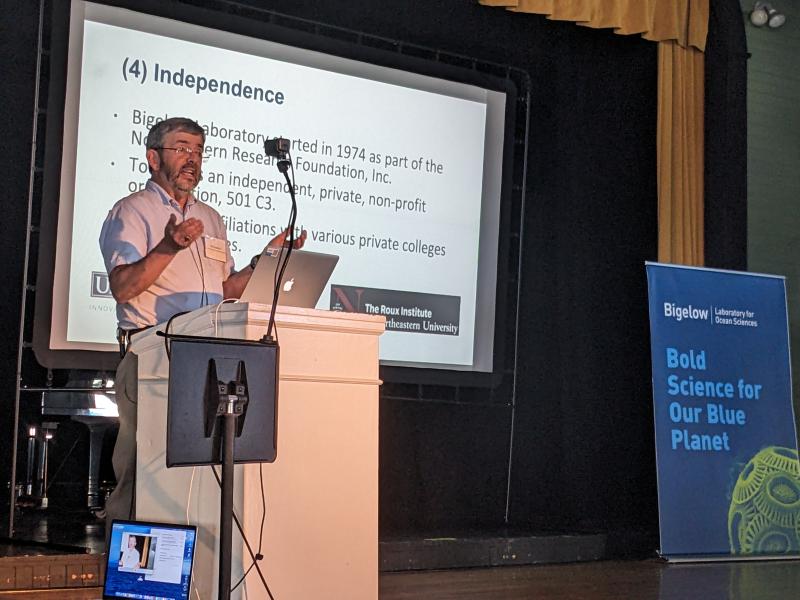 Barney Balch, Ph.D., SRS emeritus, Bigelow Laboratory for Ocean Sciences. CANDI JONETH/Boothbay Register
Barney Balch, Ph.D., SRS emeritus, Bigelow Laboratory for Ocean Sciences. CANDI JONETH/Boothbay Register
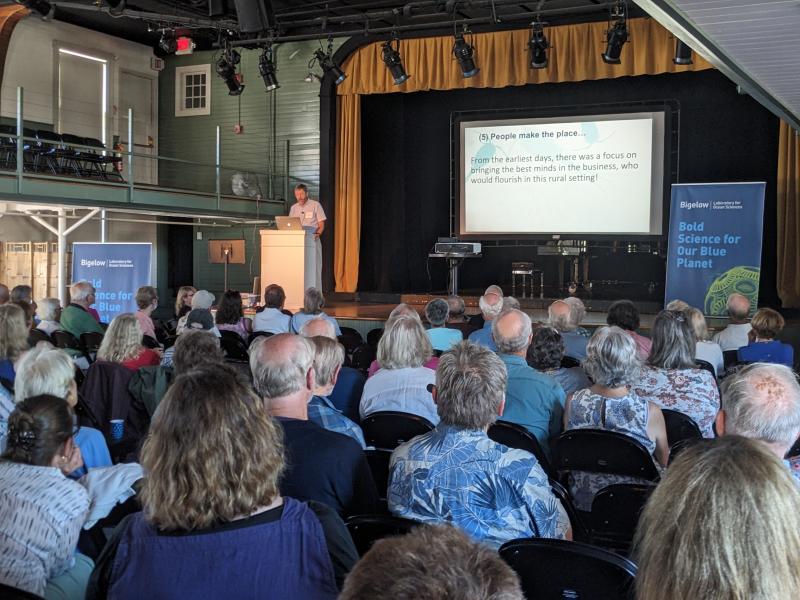 CANDI JONETH/Boothbay Register
CANDI JONETH/Boothbay Register
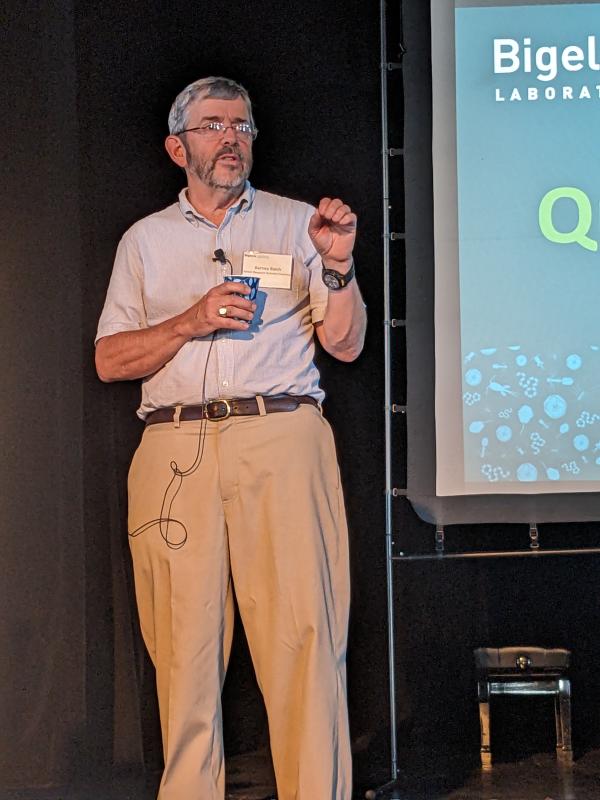 CANDI JONETH/Boothbay Register
CANDI JONETH/Boothbay Register
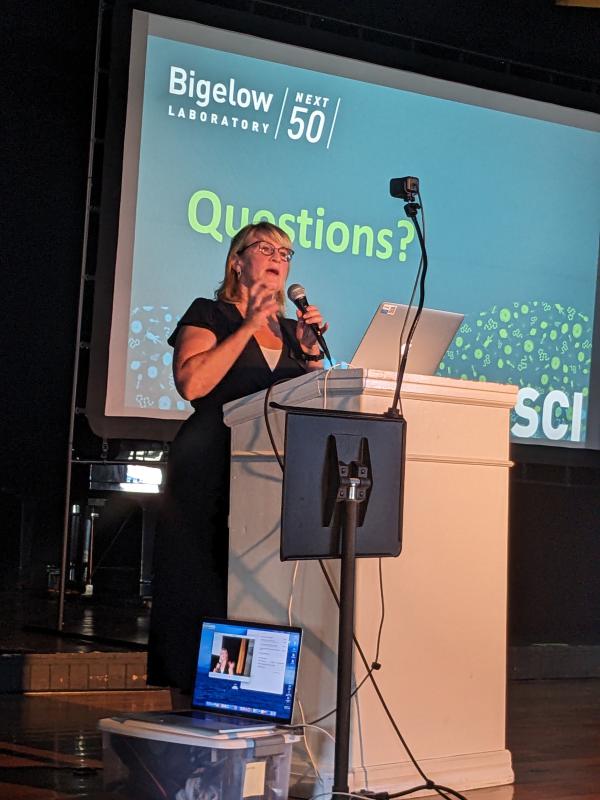 Deborah Bronk, president & CEO, Bigelow Laboratory for Ocean Sciences. CANDI JONETH/Boothbay Register
Deborah Bronk, president & CEO, Bigelow Laboratory for Ocean Sciences. CANDI JONETH/Boothbay Register
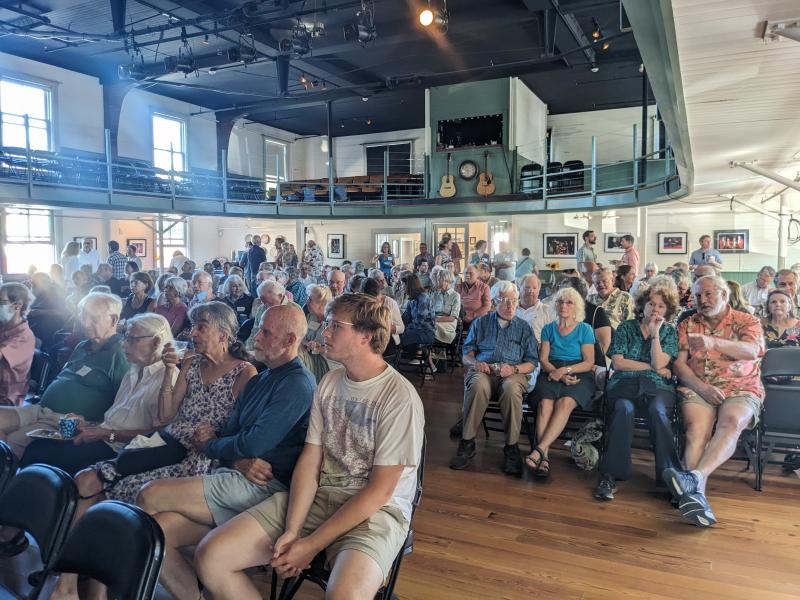 CANDI JONETH/Boothbay Register
CANDI JONETH/Boothbay Register
 Barney Balch, Ph.D., SRS emeritus, Bigelow Laboratory for Ocean Sciences. CANDI JONETH/Boothbay Register
Barney Balch, Ph.D., SRS emeritus, Bigelow Laboratory for Ocean Sciences. CANDI JONETH/Boothbay Register
 CANDI JONETH/Boothbay Register
CANDI JONETH/Boothbay Register
 CANDI JONETH/Boothbay Register
CANDI JONETH/Boothbay Register
 Deborah Bronk, president & CEO, Bigelow Laboratory for Ocean Sciences. CANDI JONETH/Boothbay Register
Deborah Bronk, president & CEO, Bigelow Laboratory for Ocean Sciences. CANDI JONETH/Boothbay Register
 CANDI JONETH/Boothbay Register
CANDI JONETH/Boothbay Register
Few people are as uniquely positioned to tell the story of Bigelow Laboratory for Ocean Sciences’ (BLOS) first 50 years as Dr. Barney Balch, and on July 16, to a crowd of about 160 at the Opera House of Boothbay Harbor, he did. Combining his personal history with the laboratory and research gleaned from 50 years’ worth of Bigelow annual reports, Balch inaugurated the 2024 Café Sci series with a look back on Bigelow’s legacy in “Celebrating the Past, Solving for the Future.”
Balch is a senior research scientist who crosses the interdisciplinary lines in biocalcification, bio-optics, ocean color algorithms for satellite remote sensing of carbon production, ocean acidification and coccolithophore mixotrophy, according to his professional bio.
At 14, Balch was “just a kid who needed braces” when he met Charles (1927 - 2012) and Clarice Yentsch. The Yentschs had arrived in Gloucester, Massachusetts in 1970 to start UMass Marine Station, which Balch sees Bigelow as having grown out of. The facility was not ready, and the Yentschs found an unoccupied church and set up shop. They clamped plywood to the pews and set up equipment on them. Clarice Yentsch was known to have used the church’s stained glass windows to create different optics in their sea samples, Balch said.
Balch started with a clicker and counted phytoplankton under slides, but as a ninth grader, he was too young to be employed by the university. Acknowledging that “this would never fly today,” Balch created a company (Balch’s Visual Aids) in order to be paid. He shared with the audience one of his purchase orders for $30.80.
In the summer of 1974, Balch was on a small boat with the Yentschs and fellow researcher Spencer Apollonio (1932-2022). They docked at a vacant government facility at McKown Point which the Yentschs would go on to rent for $1 per year. The successful scouting trip was the start of BLOS in West Boothbay Harbor, where the lab would reside, beside the Department of Marine Resources, until 2012. Once again finding himself underage and choosing to ignore that detail, Balch toasted new enterprise with whiskey provided by Apollonio, a drink that left a lasting impression on the young teenager.
Balch’s talk focused on “10 key ingredients to Bigelow’s success,” which can be viewed in full on Bigelow’s YouTube channel. Ingredient #2 is the “scrappy attitude of risk takers” which he attributed to the Yentschs, Apollonio and most of Bigelow’s current scientists. He likened them to fighter pilots who fly low and fast. Independent collaboration, freedom to follow the science, and that people make the place are other key ingredients. He concluded with “We stand on the shoulders of giants,” their namesake and founder of modern oceanography, Henry Bryant Bigelow, but also, that the founders sought to break down traditional barriers to discovery, prioritize research above all else, and foster interdisciplinary collaboration.
Balch has written over 350 research proposals in his career and Bigelow is in the upper echelon of success rates in terms of funding awards, said BLOS President and CEO Deborah Bronk in her closing remarks. Her eye to the future focuses on two of humanity’s greatest challenges: “That there is 590 billion metric tons of carbon to address and that we need to feed eight billion people,” she said. “Over the next 50 years, Bigelow will double down on its operational model of being a premiere destination for scientists. We are not limited by ideas or drive.” She offered a three-prong approach; 1. Discoveries – continue to research our changing planet, ocean health and function, and understanding the ocean’s potential, 2. Solutions – prevent harmful algae blooms, stop methane emissions from cows, and convert CO2 into rock, and 3. Inspiration – produce resilient thought leaders who are not afraid to fail.
She thanked sponsor HM Payson and Cathy Sherill of the Opera House at Boothbay Harbor.
The series continues July 23 with senior research scientist Nicole Poulton presenting, “Flow Cytometry: Revealing the Microscopic Wonders in a Drop of Seawater,” on July 30 with senior research scientist Ramunas Stepanauskas presenting “Single Cell Genomics: Understanding the Ocean’s Potential, One Cell at a Time,” and on Aug. 6, the series closes with “Satellite Oceanography: Unlocking Insights by Analyzing the Big Picture,” by senior research scientist Catherine Mitchell. Space is limited, and free registration is required.










































